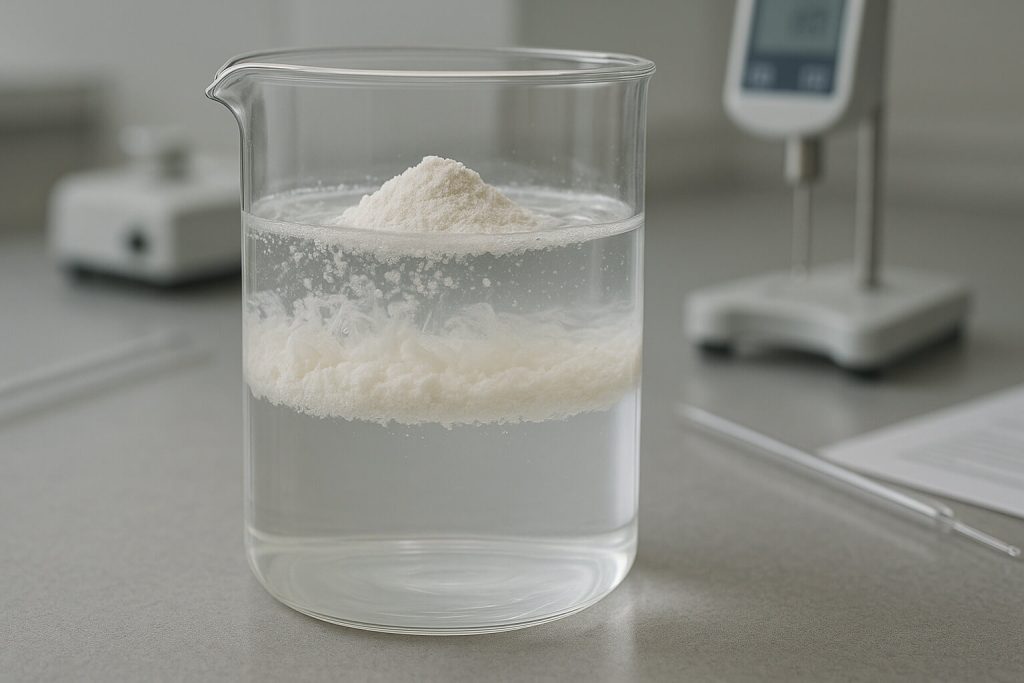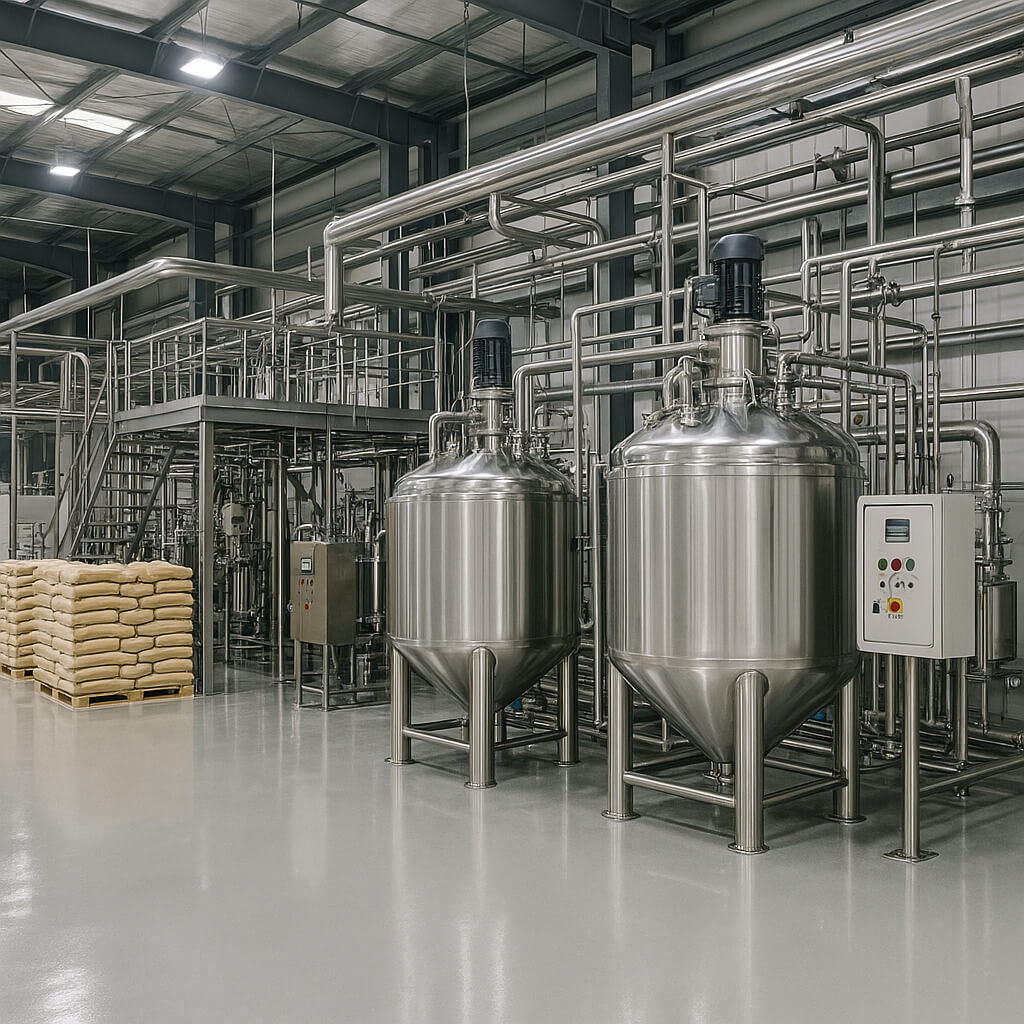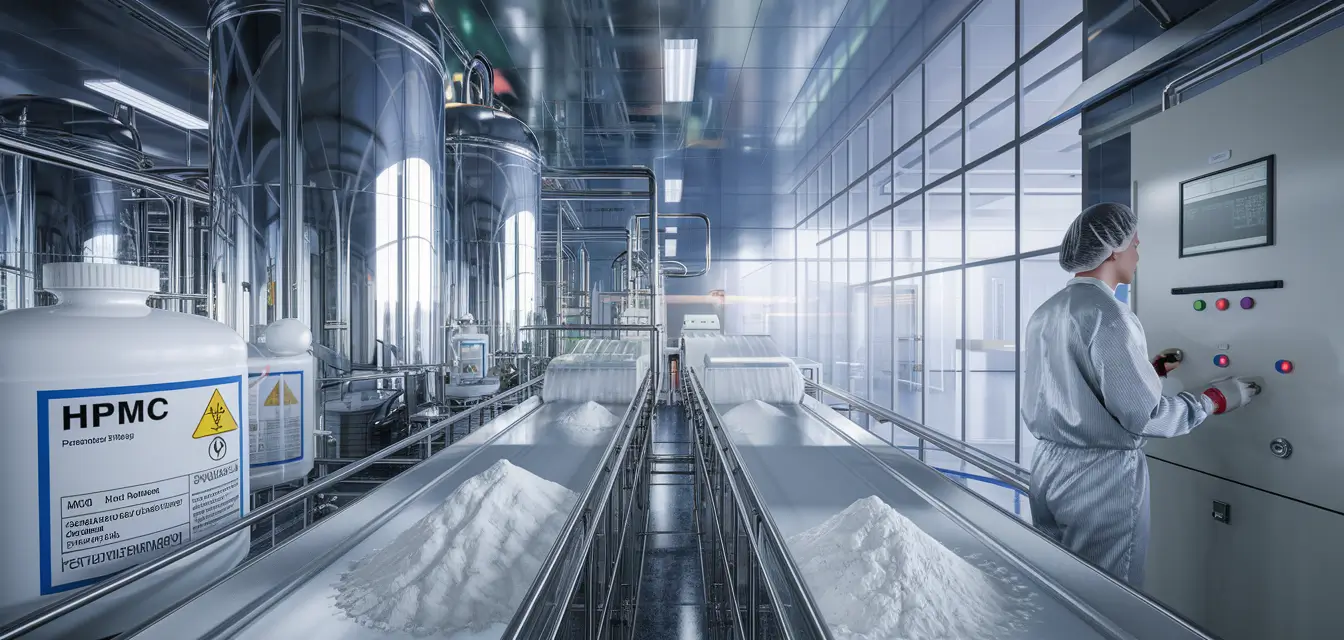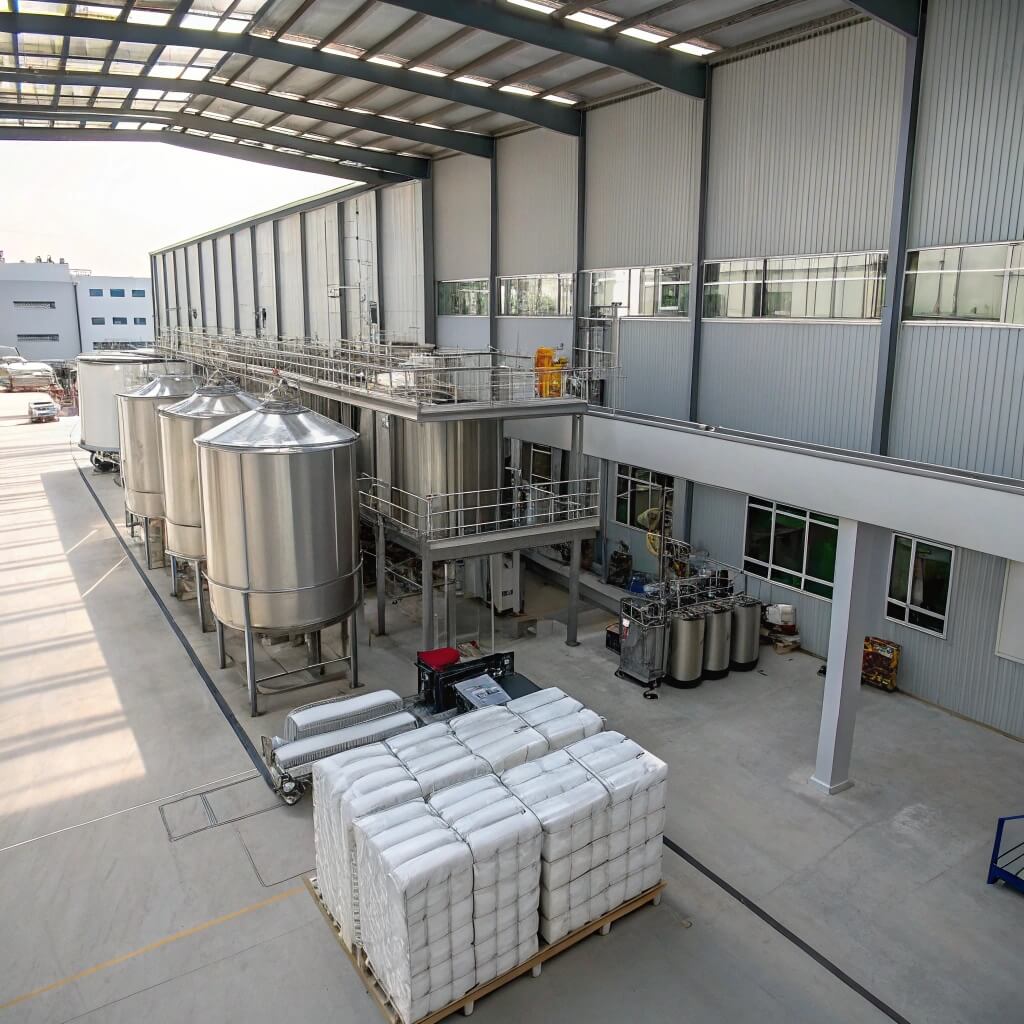Understanding what the differences are between HPMC grades is crucial for industries utilizing Hydroxypropyl Methylcellulose (HPMC). This versatile compound is essential for various applications in pharmaceuticals, construction, and food products. By knowing the specific characteristics of each HPMC grade, businesses can select the appropriate type that meets their particular needs and requirements. In this article, we will explore the types of HPMC, how they affect performance in different sectors, and what to consider when choosing the right grade for your application.

1. What Are HPMC Grades and Why Are They Important?
HPMC grades are defined by their viscosity, solubility, and specific applications in various industries. But here’s the kicker: the right HPMC grade can significantly influence a product’s performance in critical applications. Different grades of HPMC serve unique roles; therefore, understanding these differences is essential for businesses that rely on this compound for their operations.
There are several reasons why HPMC grades are important. Firstly, industries such as pharmaceuticals and construction demand precise formulations that hinge on the properties of HPMC. In pharmaceuticals, for instance, HPMC is used as a binding agent in tablet production and as a film-former in coatings. Its ability to control the release of bioactive compounds makes it vital for effective drug delivery systems.
In construction, HPMC is used in cement formulations and adhesives. The viscosity range of HPMC affects water retention, workability, and adhesion properties, making grades an important aspect of construction product formulations. In the food industry, the emphasis on low-viscosity HPMC grades ensures that sauces and dressings maintain desirable textures and stability.
Choosing the wrong HPMC grade can have severe implications. It can lead to product failure or consumer dissatisfaction, which can ultimately damage a company’s reputation. An informed decision about the right grade aligns operational success with product quality, making knowledge about these differences critically important for manufacturing managers and purchasing decision-makers alike.
| درجة HPMC | Viscosity Range (cP) | أهمية |
|---|---|---|
| اللزوجة المنخفضة | 100-200 | Used in food products & cosmetics |
| اللزوجة المتوسطة | 200-800 | Ideal for pharmaceuticals |
| اللزوجة العالية | 800+ | Essential in construction applications |
2. What Are the Types of HPMC Grades?
The types of HPMC grades can be categorized based on their viscosity levels—low, medium, and high. Ready for the good part? Each category has specific applications that cater to various industry needs.
Low viscosity HPMC grades range from 100 to 200 cP and are commonly used in food products and cosmetics. These grades are characterized by their ability to create desired textures and improve stability without changing the product’s fundamental characteristics. For instance, in salad dressings, low viscosity HPMC can help maintain uniformity and avoid separation of ingredients.
Medium viscosity grades, ranging from 200 to 800 cP, are primarily used in the pharmaceutical industry. These grades provide essential functionalities, such as acting as binding agents in tablets and providing controlled-release mechanisms. When formulating oral medications, a medium viscosity grade ensures that active ingredients are released at a consistent rate, leading to better therapeutic outcomes.
On the other hand, high viscosity HPMC grades, typically greater than 800 cP, play a crucial role in construction applications. These grades enhance the workability and water retention of materials like cement and adhesives. The increased viscosity allows for longer open times when applying products, which can be critical on construction sites.
Selecting an HPMC grade without understanding its type can result in suboptimal formulations. Therefore, it is essential for manufacturers and product developers to have a thorough understanding of these differences to make informed decisions.
| HPMC Grade Type | اللزوجة (cP) | التطبيقات |
|---|---|---|
| اللزوجة المنخفضة | 100-200 | المنتجات الغذائية ومستحضرات التجميل |
| اللزوجة المتوسطة | 200-800 | المستحضرات الصيدلانية والطلاءات |
| اللزوجة العالية | 800+ | Construction, advanced formulations |
3. How Do HPMC Grades Affect Performance in Different Sectors?
The performance of HPMC grades can vary dramatically across different sectors, and knowing these differences is vital. What’s the real story? The choice of HPMC grade can significantly influence product quality and efficacy in unique applications.
In the pharmaceutical industry, for instance, HPMC acts as a controlled-release agent. High-viscosity HPMC grades help ensure that medications are administered at a steady rate, which is particularly important for sustained-release formulations. This functionality allows for greater bioavailability, which leads to better patient outcomes. A study on the use of HPMC in tablets has shown significantly improved release profiles compared to other binders.
In construction, the viscosity of HPMC grades directly impacts the workability of cement-based materials. High viscosity grades are preferred for tile adhesives as they enhance adhesion means that they offer superior performance, even under challenging conditions such as high humidity. Contractors often find that HPMC-based adhesives adhere better to surfaces and allow for easier application, showing why their choice of HPMC grade can lead to better project outcomes.
In the food sector, low viscosity HPMC grades are instrumental in creating appropriate textural experiences in products like sauces. By preventing sedimentation and ensuring a homogenous mix, these grades can lead to improved consumer satisfaction. Retailers often rely on these products for their marketability as they align with consumer expectations for texture and quality.
Recognizing and leveraging the differences in HPMC grades across these sectors is essential for manufacturers aiming for excellence in product formulations. It underscores the importance of selecting suitable grades based on the intended application to enhance performance and consumer satisfaction.
| صناعة | Preferred HPMC Grade | فوائد الأداء |
|---|---|---|
| المستحضرات الصيدلانية | اللزوجة العالية | Controlled release, improved bioavailability |
| بناء | اللزوجة العالية | Better adhesion, enhanced workability in adhesives |
| صناعة الأغذية | اللزوجة المنخفضة | Improved texture, prevents sedimentation |
4. What Factors Should Be Considered When Selecting HPMC Grades?
While selecting an HPMC grade, various factors come into play that can affect your final product’s quality and performance. This is where it gets interesting! Consideration of these factors ensures that you make an informed choice that aligns with operational requirements.
First, viscosity requirements are paramount. Each industry has specific viscosity needs, and matching those with the appropriate HPMC grade is critical. In pharmaceuticals, for instance, if the viscosity is too low, it could potentially compromise the controlled release of active ingredients, leading to ineffective therapeutic outcomes.
Next up is solubility. Not all HPMC grades dissolve evenly in water or at the same rate, which is a crucial factor for formulation stability. Formulators must understand how quickly or slowly a grade dissolves to maintain the desired attributes of the final product. Testing solubility can provide key insights that influence grade selection.
Furthermore, material compatibility can impact performance. Different grades can interact with other excipients in unpredictable ways. For example, a specific HPMC grade may inhibit the function of a binders or stabilizers, altering the overall product effectiveness. Conducting compatibility tests ensures that other components in the formulation work harmoniously with the chosen HPMC grade.
Lastly, consider environmental factors such as temperature and humidity during both storage and application. HPMC grades may exhibit different behaviors under varying conditions, so understanding these variables can lead to better outcomes in formulation performance.
| Factors to Consider | وصف |
|---|---|
| متطلبات اللزوجة | Must meet specific thresholds for effective use |
| الذوبان | Varies between grades, impacts stability |
| Material Compatibility | Ensure smooth integration with other ingredients |
| الظروف البيئية | Affects behavior during production and storage |
5. How to Choose the Right HPMC Grade for Your Products?
Choosing the right HPMC grade for your products is not a straightforward task. But here’s the kicker: using a methodical approach can streamline this process.
Start by thoroughly assessing your product’s requirements. What viscosity do you need? What are the primary applications for which you plan to use HPMC? Gathering this information will form the backbone of your selection process, enabling you to focus on the most suitable grades.
Next, consult technical data sheets from suppliers. These documents contain essential details regarding each HPMC grade, such as viscosity, solubility, and ideal applications. Comparing the specifications allows purchasing managers to narrow down their options more efficiently.
Once you have a short list, consider conducting small-scale trials. Testing different grades in real-world applications helps determine which HPMC performs best under your specific conditions. This trial process is essential to evaluate factors such as release rates, adhesion, and overall product quality.
Moreover, search for supplier expertise and support during your selection process. Engaging with suppliers can provide valuable insights. They might offer recommendations based on industry standards or your production parameters.
Finally, pay attention to cost considerations. While some HPMC grades may initially appear more expensive, the total cost of ownership, which includes factors such as efficiency and potential product returns, should guide your decision-making process.
| Selection Steps | وصف |
|---|---|
| Assess Product Needs | Identify viscosity and application requirements |
| Consult Technical Documents | Gather information from suppliers for informed choices |
| Conduct Trials | Test various grades for real-world performance |
| Seek Supplier Expertise | Engage with suppliers for their insights and recommendations |
| Evaluate Costs | Consider total cost of ownership over upfront pricing |
6. What Are Some Common Misconceptions About HPMC Grades?
Misunderstanding HPMC grades can lead to poor choices in product formulations. What’s the real story? Clearing up common misconceptions about HPMC can help manufacturers make better decisions.
One major misconception is the belief that all HPMC grades are interchangeable. Each grade has unique properties tailored for specific applications. For example, assuming that a medium viscosity HPMC can be effectively used in high-strength construction applications ignores the unique requirements that high viscosity grades fulfill, which may lead to product failure.
Another myth suggests that higher viscosity always equates to better performance. While certain applications benefit from increased viscosity, others may require precision with lower viscometric properties to achieve desired outcomes. Therefore, opting for a higher viscosity grade without examining the specifics can be detrimental.
Some people also think HPMC grades are solely relevant to the pharmaceutical sector, which disregards the fundamental roles they play across construction, food, and cosmetic industries. This misunderstanding diminishes the broader applications and benefits of HPMC.
Finally, there’s a belief that HPMC cannot fail if it meets the basic specifications. However, failing to consider interaction effects with other ingredients can lead to unfavorable outcomes. Experience shows that examining all performance aspects and interactions is crucial.
| Common Misconceptions | Explanations |
|---|---|
| All Grades Are Interchangeable | Unique properties make grades suited for specific needs |
| Higher Viscosity = Better | Performance depends on application requirements |
| Only Relevant in Pharma | Used across multiple industries – food, cosmetics, etc. |
| HPMC is Always Reliable | Interaction effects can lead to failures |
7. How Are HPMC Grades Manufactured and What Are Their Sources?
To truly understand HPMC grades, it’s important to delve into their manufacturing processes and sources. This is where it gets interesting! HPMC is synthesized through a series of chemical processes that start with cellulose, commonly sourced from wood pulp.
The first step involves extracting cellulose from plant materials. This cellulose is then subjected to chemical modification through etherification, where hydroxypropyl and methyl groups are introduced. The resultant Hydroxypropyl Methylcellulose is categorized into various grades based on the extent of substitution and the viscosity achieved.
Key suppliers are critical in ensuring the quality of HPMC. They often have rigorous quality assurance practices to verify that the HPMC grades meet specified industry standards. Manufacturers seeking to buy HPMC should partner with suppliers who maintain stringent quality checks to avoid issues that may arise later in production.
Moreover, sustainability has become a significant factor in modern manufacturing. With companies increasingly aiming for eco-friendly practices, sourcing HPMC from sustainable forestry and utilizing green chemistry in production methods has gained importance. This trend aligns with the push for environmentally conscious products across various industries.
Understanding these manufacturing processes helps both purchase managers and quality control professionals make informed decisions when sourcing HPMC grades for their formulations.
| HPMC Manufacturing Process | Key Steps |
|---|---|
| استخراج السليلوز | Derived from wood pulp |
| الأثير | Introduces hydroxypropyl and methyl groups |
| ضمان الجودة | Ensures grades meet specified industry standards |
| Sustainable Sourcing | Sourcing from eco-friendly practices |
8. What Are the Best Practices for Storing and Handling HPMC?
Once HPMC grades are sourced, proper storage and handling become crucial to maintaining their quality. What’s the real story? Following best practices helps to prevent degradation and ensures optimal performance in formulations.
First off, HPMC should be stored in a cool, dry environment. Ideal conditions typically range between 15°C and 25°C. Humidity can lead to clumping or altered physical properties, which would compromise the product’s effectiveness in applications. Therefore, keeping HPMC in a tightly sealed container is vital for preventing moisture ingress.
Also, remember that HPMC grades have varying shelf lives. Regularly checking the age of your stock and adhering to recommended expiration dates ensures you are always working with effective products. Implementing a first-in, first-out (FIFO) inventory system can help manage this timeframe effectively.
When handling HPMC, minimize dust generation. This enhances both product quality and worker safety. Appropriate personal protective equipment (PPE) should be employed during transfers or when working with bulk quantities of HPMC.
Tracking the storage conditions and implementing best practices leads to enhanced reliability and consistency across all your formulations, reinforcing the importance of handling procedures in quality control.
| Storage and Handling Tips | Key Practices |
|---|---|
| التحكم في درجة الحرارة | Maintain between 15°C and 25°C |
| حماية من الرطوبة | Ensure packaging is sealed to prevent moisture |
| Minimize Dust | Use PPE during transfers of HPMC |
| Monitor Shelf-Life | Implement FIFO to manage inventory effectively |
9. How Can HPMC Grades Be Implemented in Production Processes?
Implementing HPMC grades into your production processes requires a strategic approach that aligns with your formulation goals. But here’s the kicker: a well-defined protocol can lead to substantial efficiency gains in product formulation.
Begin by assessing your existing formulations to identify where HPMC can add value. This might include enhancing viscosity, improving texture, or acting as a binding agent.
Next, formalize best practices for integrating HPMC grades into your production processes. Protocols should involve steps for optimal dispersion and mixing techniques to ensure the HPMC is evenly distributed throughout the final product.
After identifying how HPMC will function within your formulation, consider conducting small-scale trials. This allows you to evaluate different grades under controlled conditions before scaling up to bulk production. Assess parameters like viscosity changes and interaction with other ingredients.
Regular monitoring throughout production is essential to ensure consistent performance. Adjusting parameters based on real-time observations can lead to improved formulations and enhanced final product quality.
Moreover, documenting results and processes over time can create a knowledge base that guides future formulation efforts and enhances overall product development capabilities.
| Implementation Steps | وصف |
|---|---|
| Assess Existing Formulations | Identify potential advantages of HPMC integration |
| Formalize Best Practices | Develop protocols for mixing and dispersing HPMC |
| Conduct Small-Scale Trials | Test various grades for performance |
| Monitor Production | Track changes and adjust parameters based on results |
| Document Findings | Create a knowledge base for future formulations |
10. What Are the Future Trends for HPMC Grades in Industry?
As we look to the future, several trends are shaping the HPMC space. What’s the real story? Staying informed will help businesses remain competitive in their respective markets.
One of the most crucial trends is the focus on sustainability. Companies are seeking HPMC grades manufactured through green processes and sustainable sourcing. This trend reflects a growing consumer preference for environmentally friendly products, prompting manufacturers to adopt practices that align with these values.
In addition, advancements in technology are influencing the development of new HPMC grades. The rise of smart materials and specialty polymers is paving the way for innovative applications of HPMC. As technology evolves, manufacturers should be ready to adapt and integrate these new materials into their product lines.
Furthermore, the demand for tailored solutions is expected to grow. More industries are looking for customized HPMC grades to meet specific performance requirements in niche applications. Establishing partnerships with suppliers who can provide bespoke solutions will be pivotal.
To stay ahead, businesses must invest in research and development for HPMC applications that cater to evolving market needs and comply with environmental standards. Embracing these trends will ensure that manufacturers enhance product quality and maintain a competitive edge.
| Future Trends | Implications |
|---|---|
| التركيز على الاستدامة | Increased demand for eco-friendly grades |
| Technological Advances | Development of smart materials and specialty applications |
| حلول مخصصة | Tailored HPMC grades for specific industries |
| Research and Development | Investment in R&D to enhance product offerings |
قسم الأسئلة الشائعة
س1: ما هو HPMC؟
HPMC stands for Hydroxypropyl Methylcellulose, a versatile compound widely used in pharmaceuticals, food, and construction for its thickening, binding, and stabilizing properties.
س2: How does HPMC work in pharmaceuticals?
HPMC serves as a controlled-release agent in drug formulations, ensuring that active ingredients are released at a consistent rate to enhance bioavailability and therapeutic effect.
س3: What factors should I consider when choosing an HPMC grade?
Key factors include viscosity requirements, solubility, material compatibility with other ingredients, and environmental conditions that could affect performance.
س4: What are common myths about HPMC grades?
Common myths include the belief that all HPMC grades are interchangeable and that higher viscosity always leads to better performance, which may not always hold true.
س5: How should HPMC be stored?
HPMC should be stored in a cool, dry place, sealed to prevent moisture ingress, and monitored to ensure it is used within its recommended shelf life.




